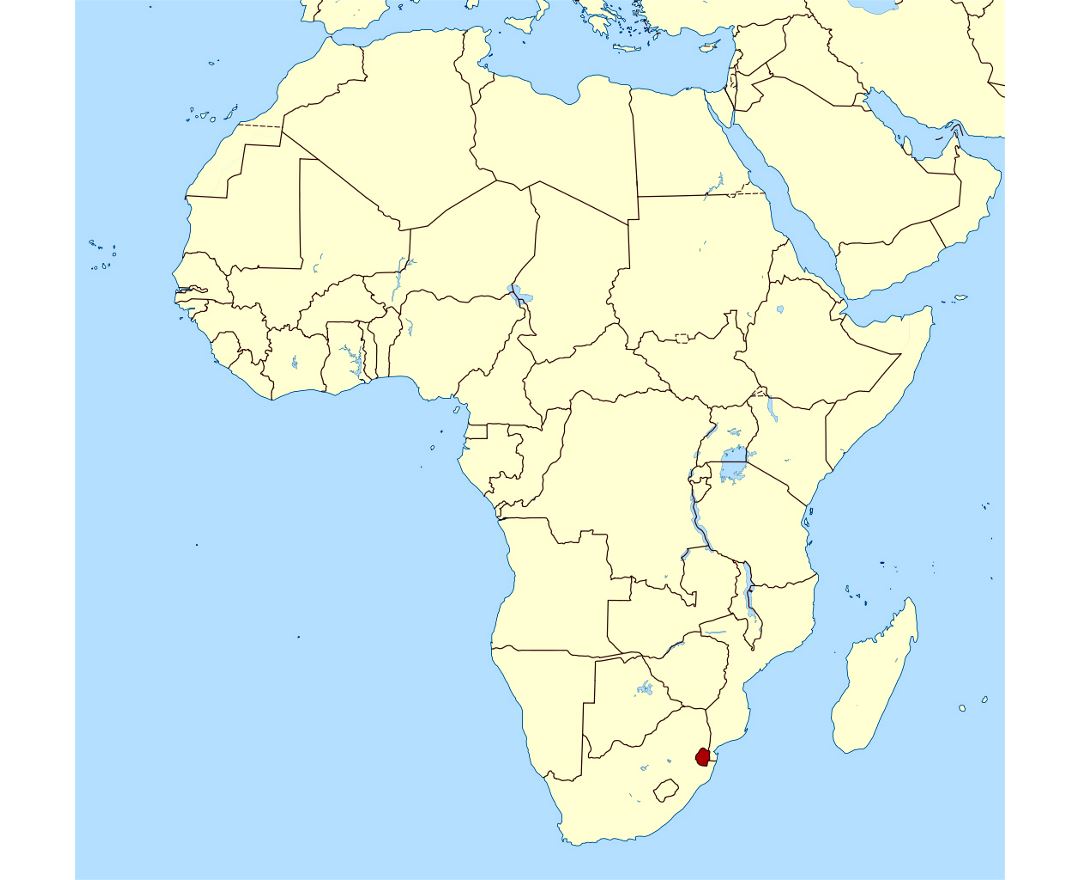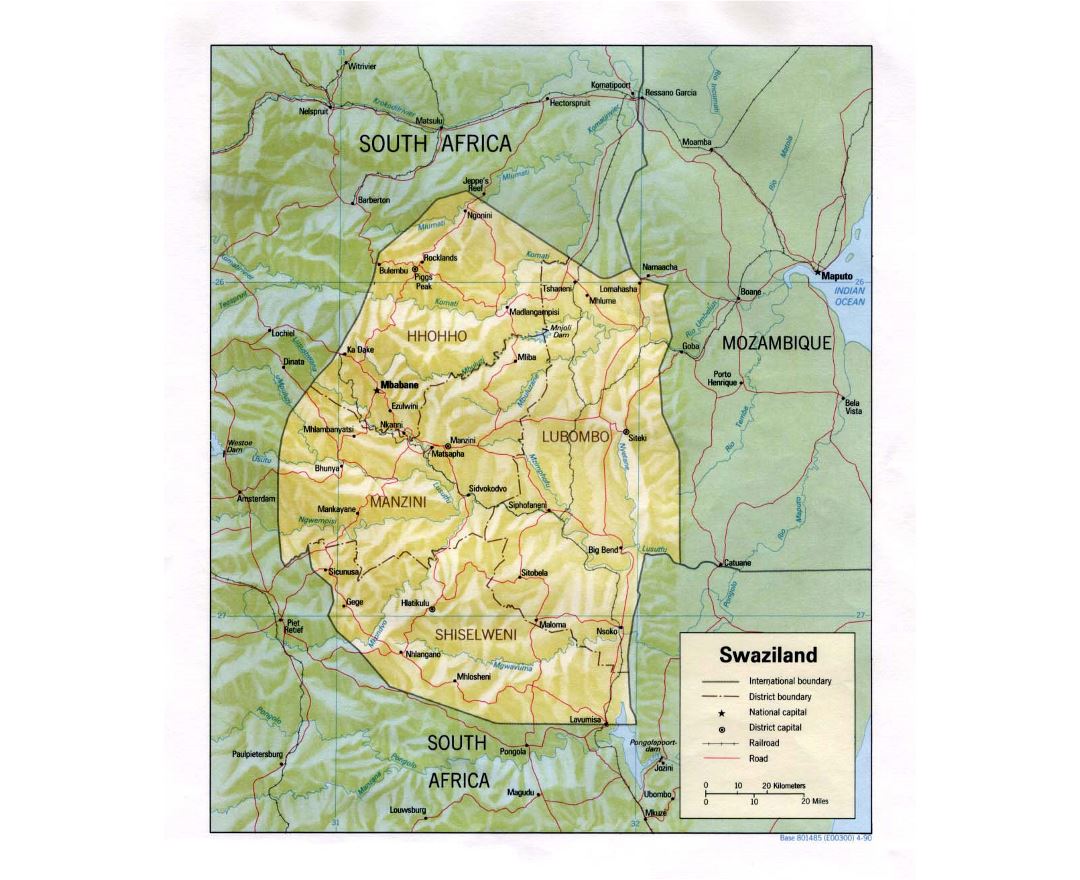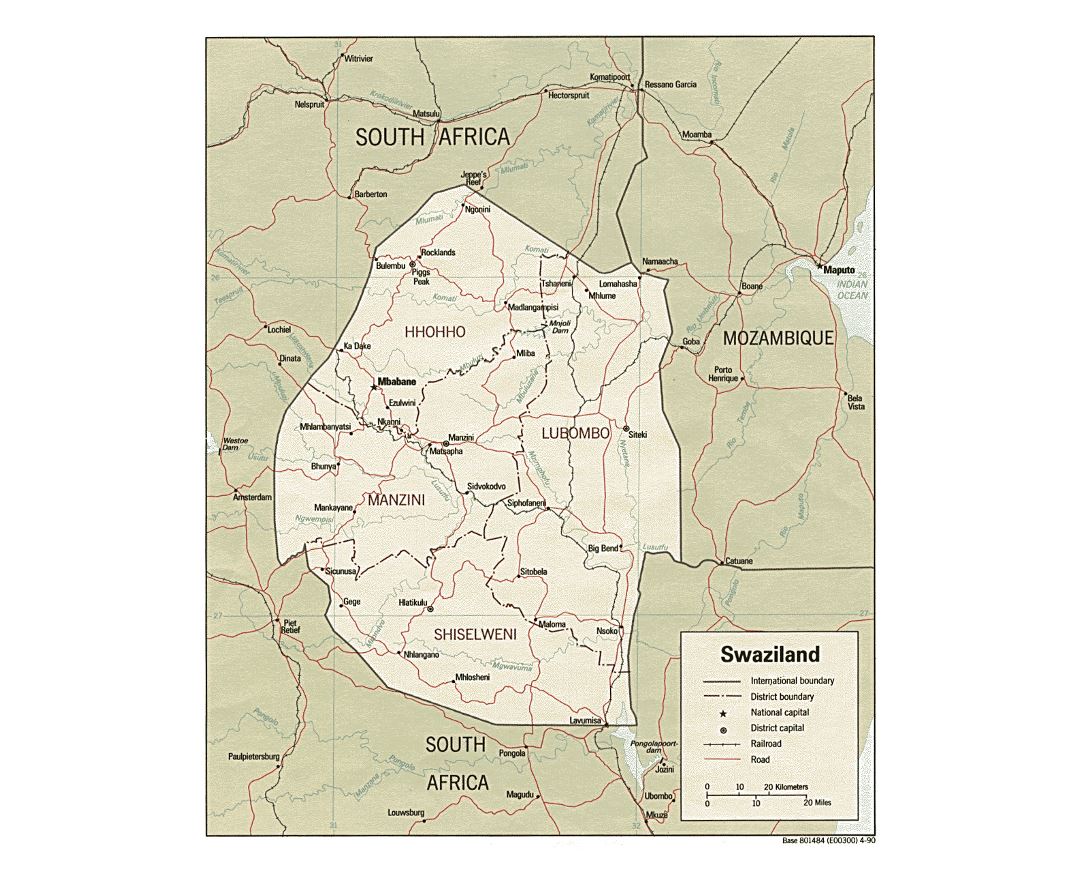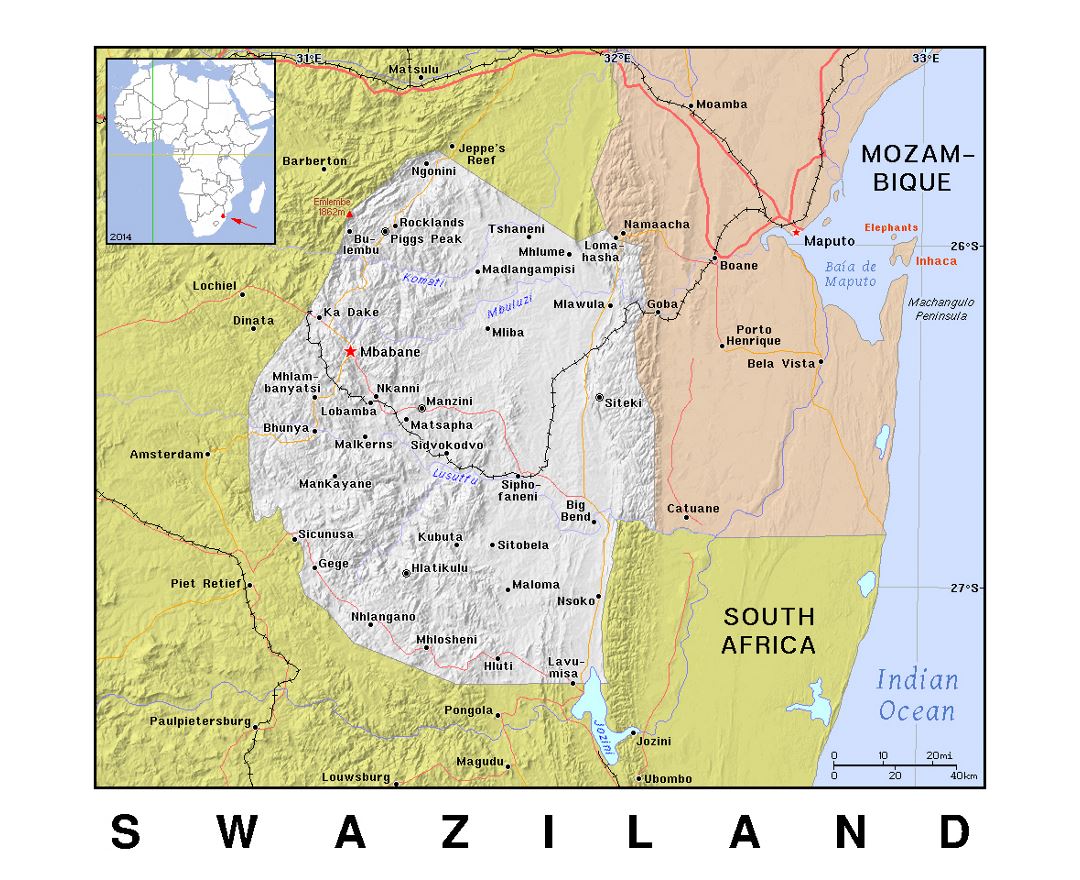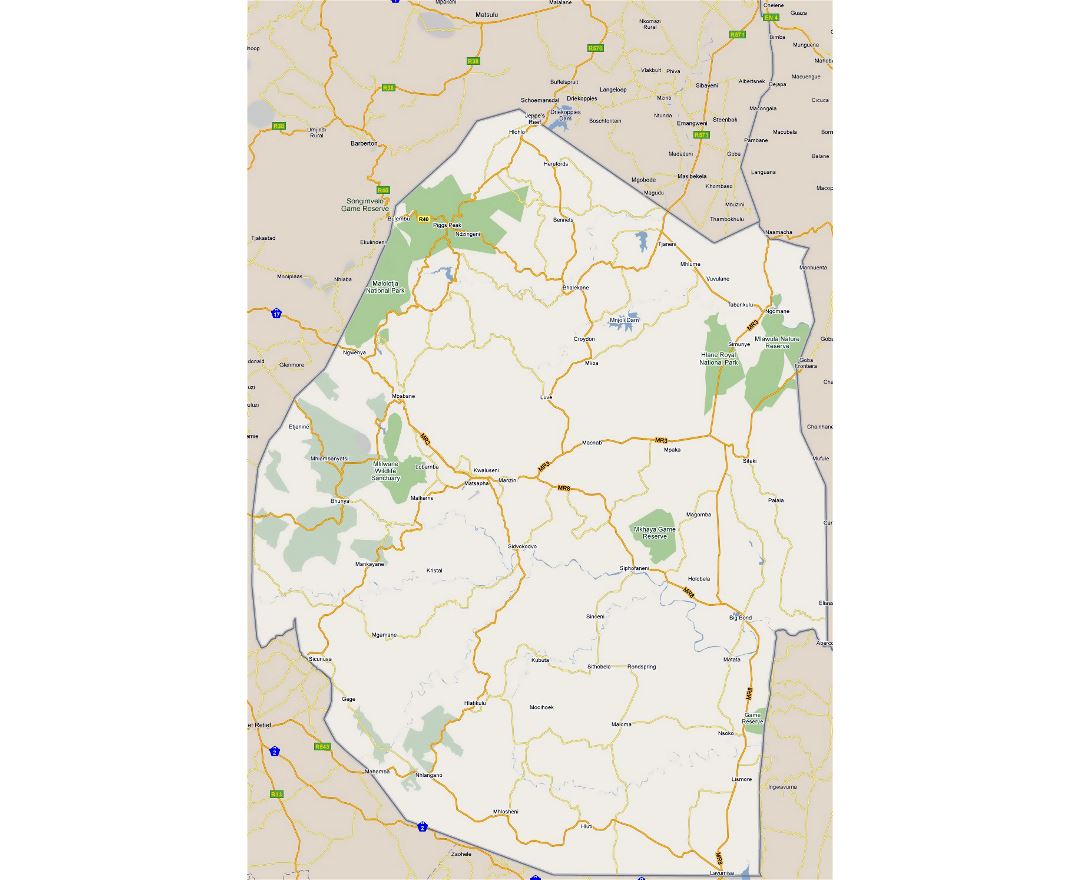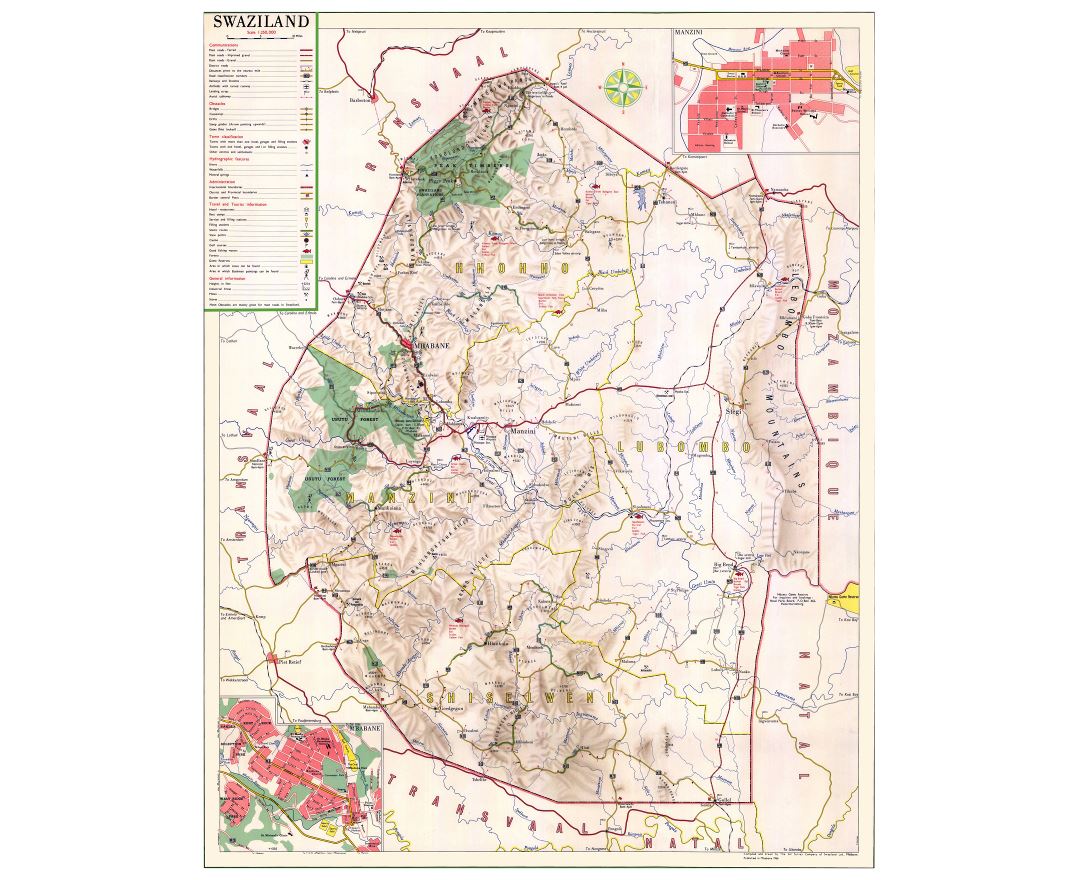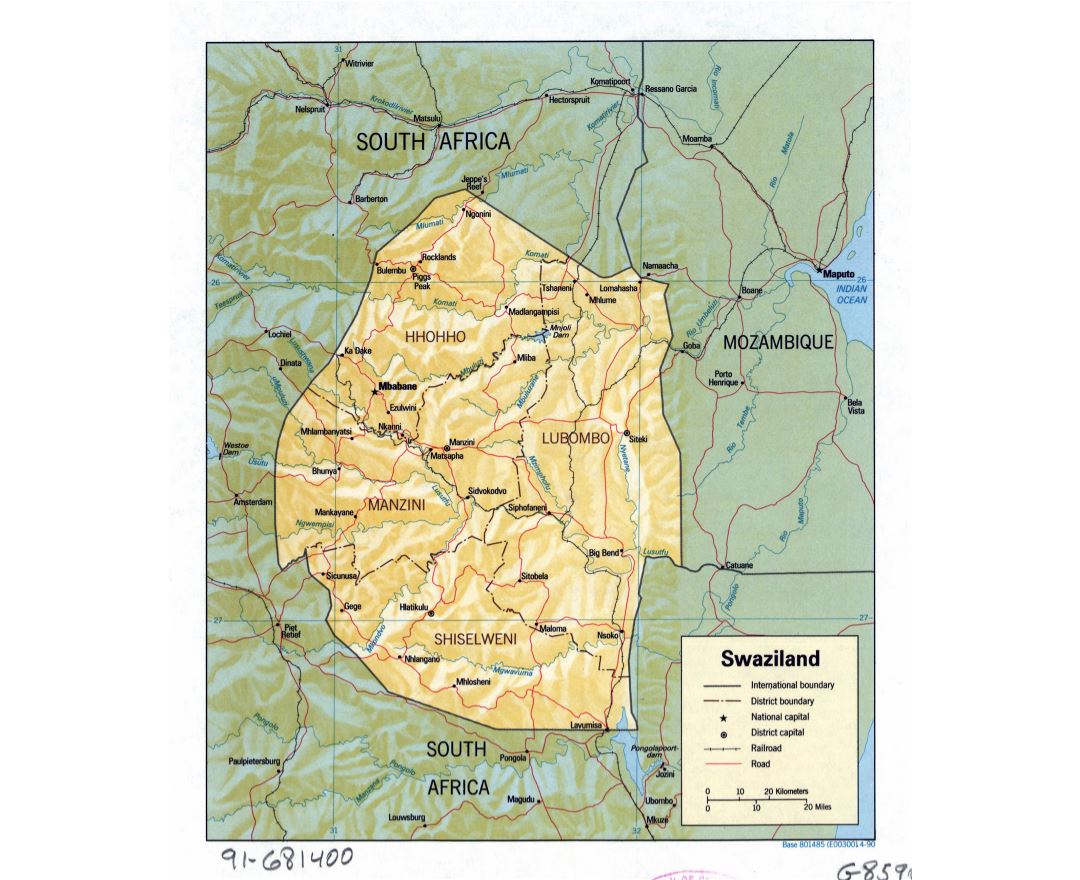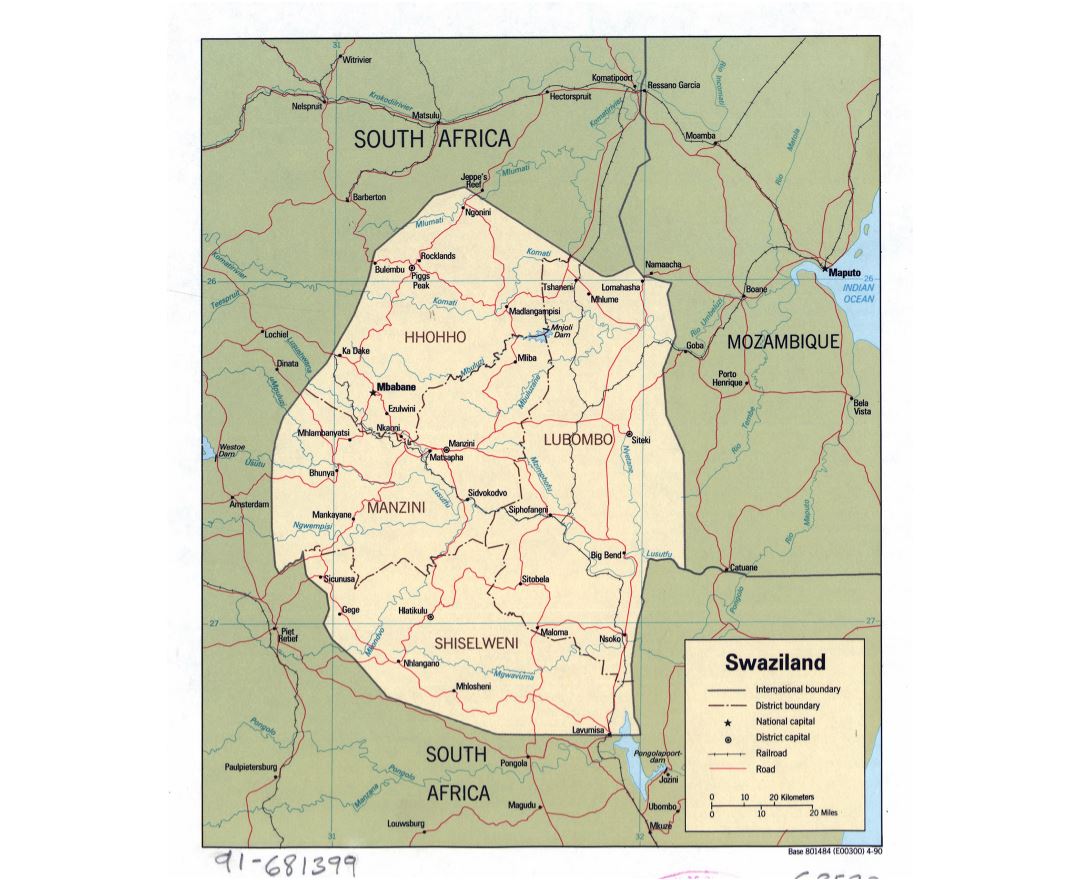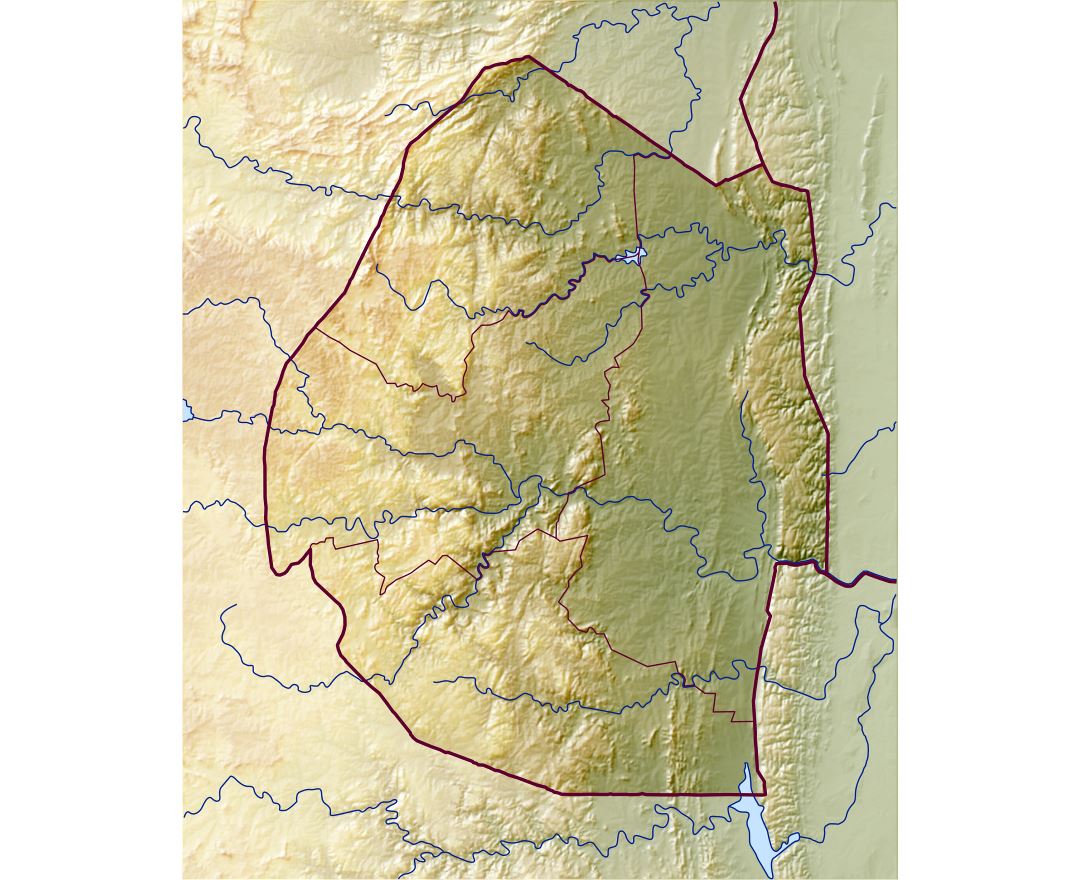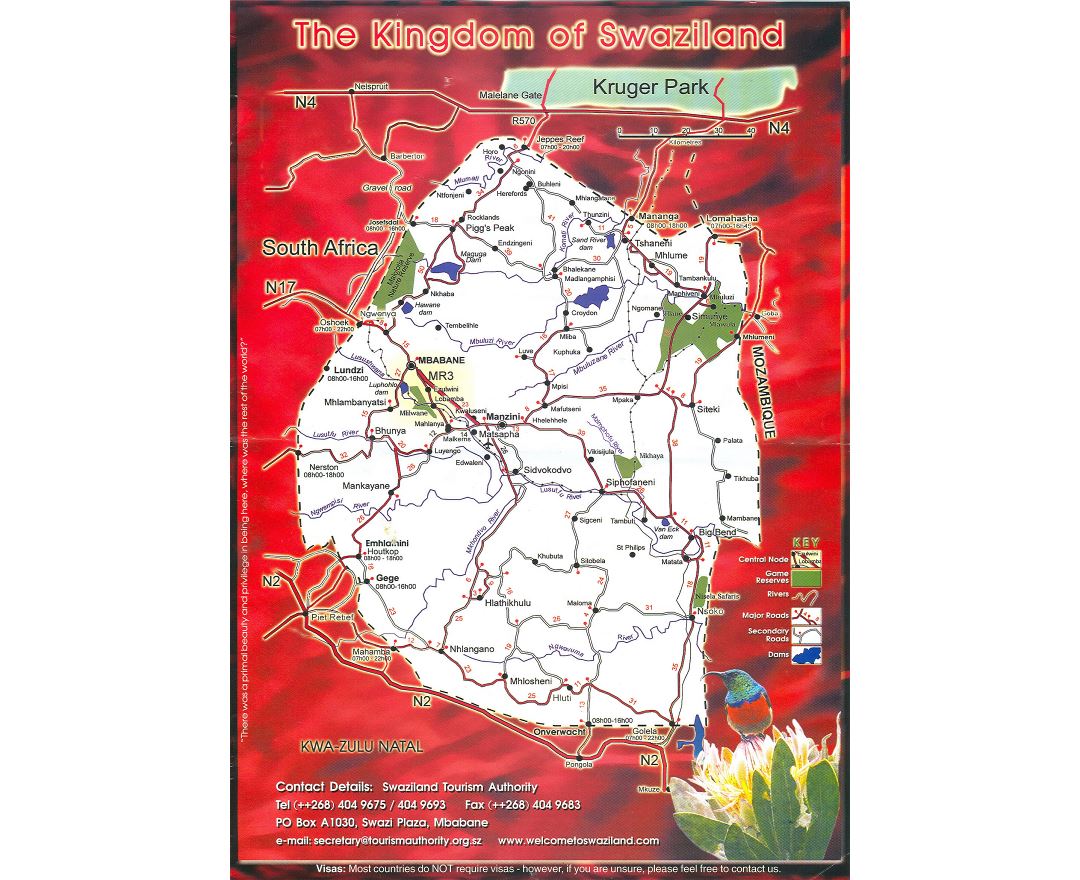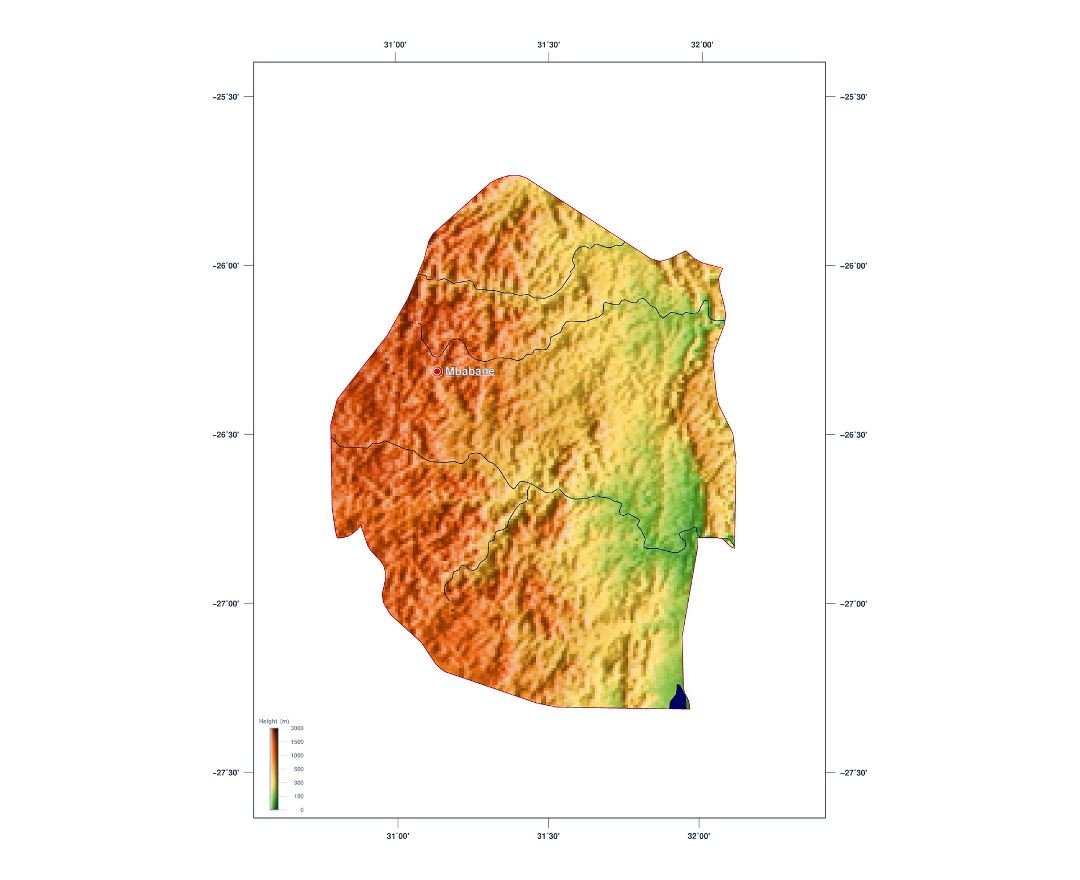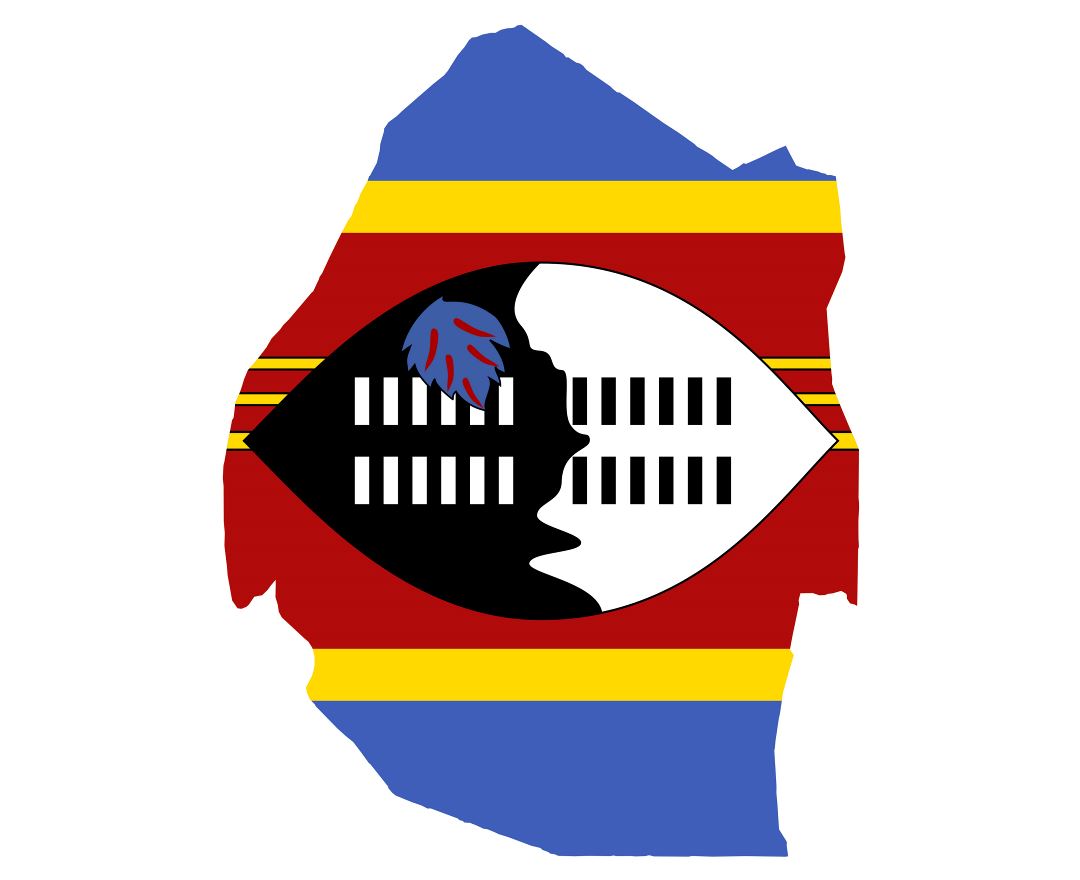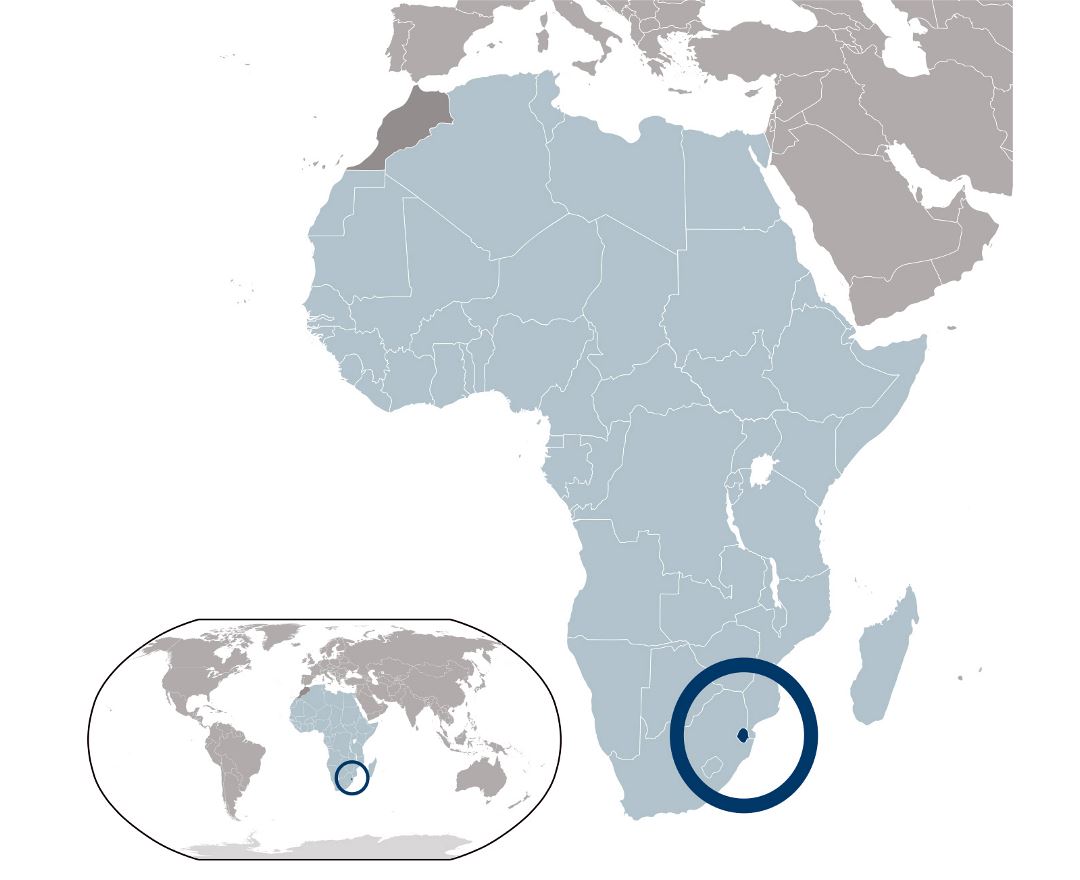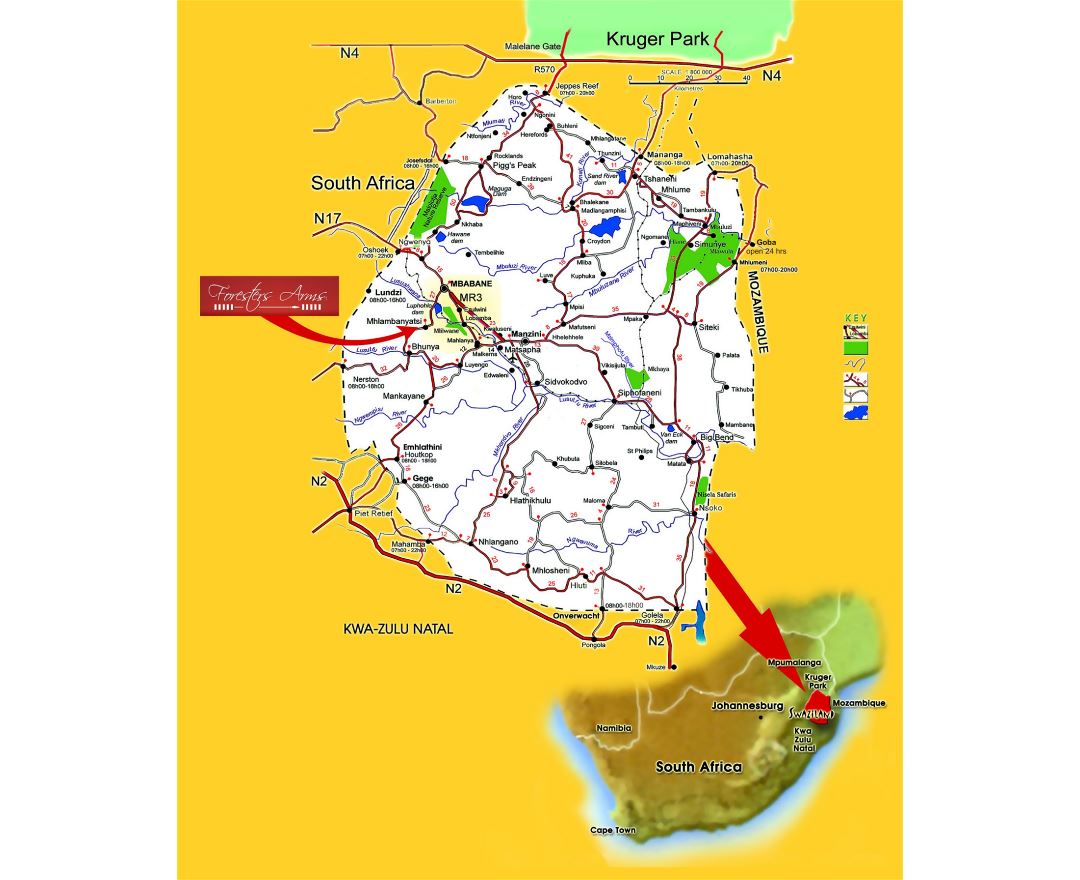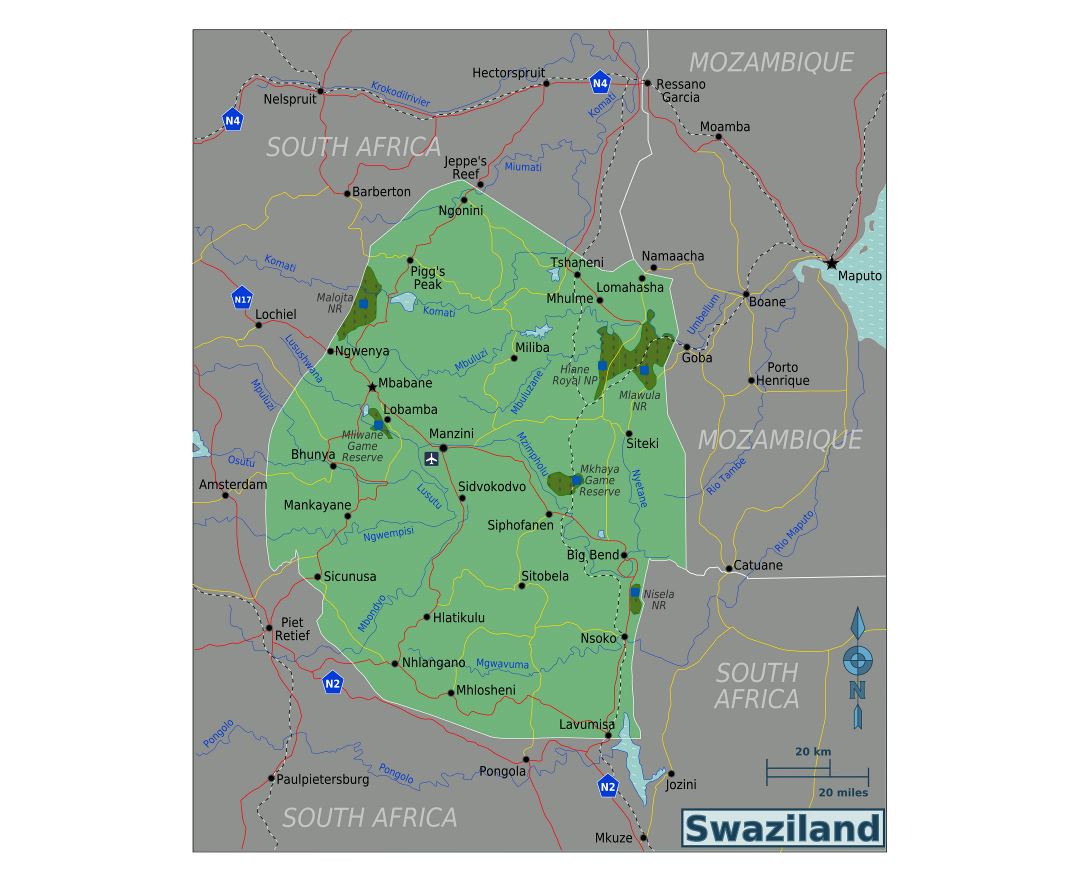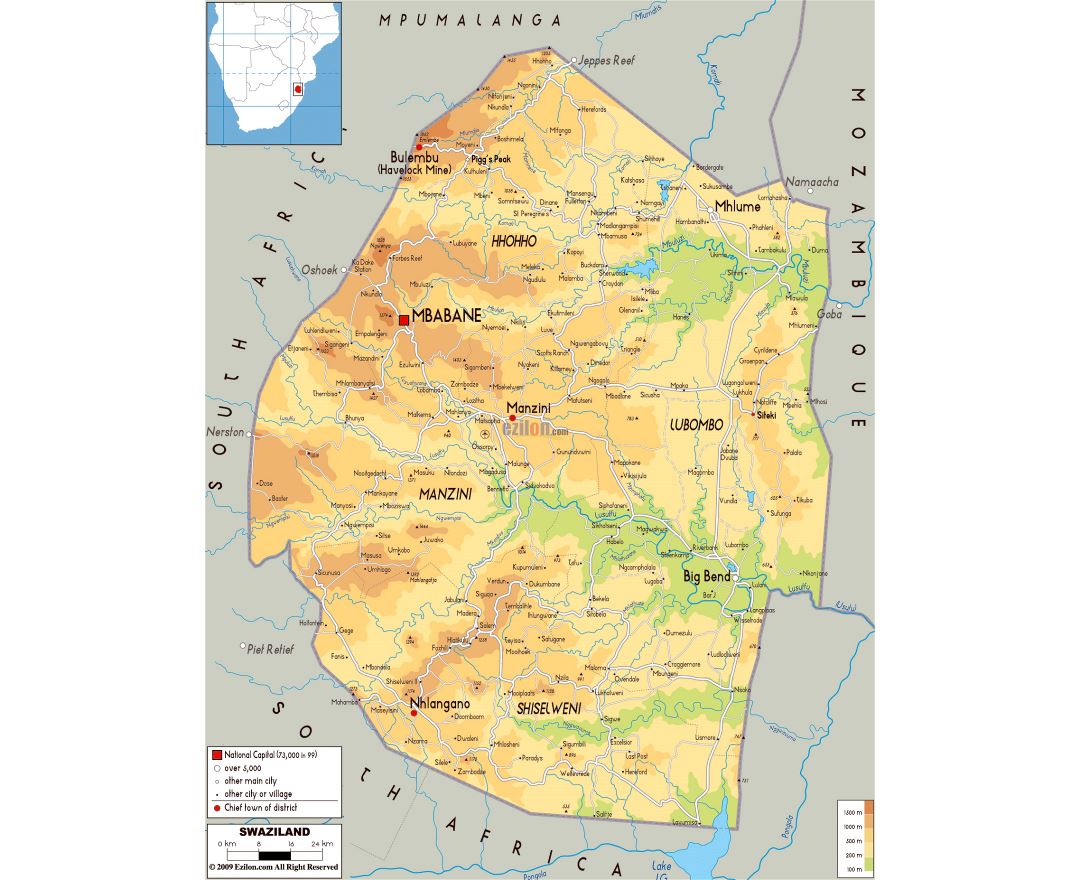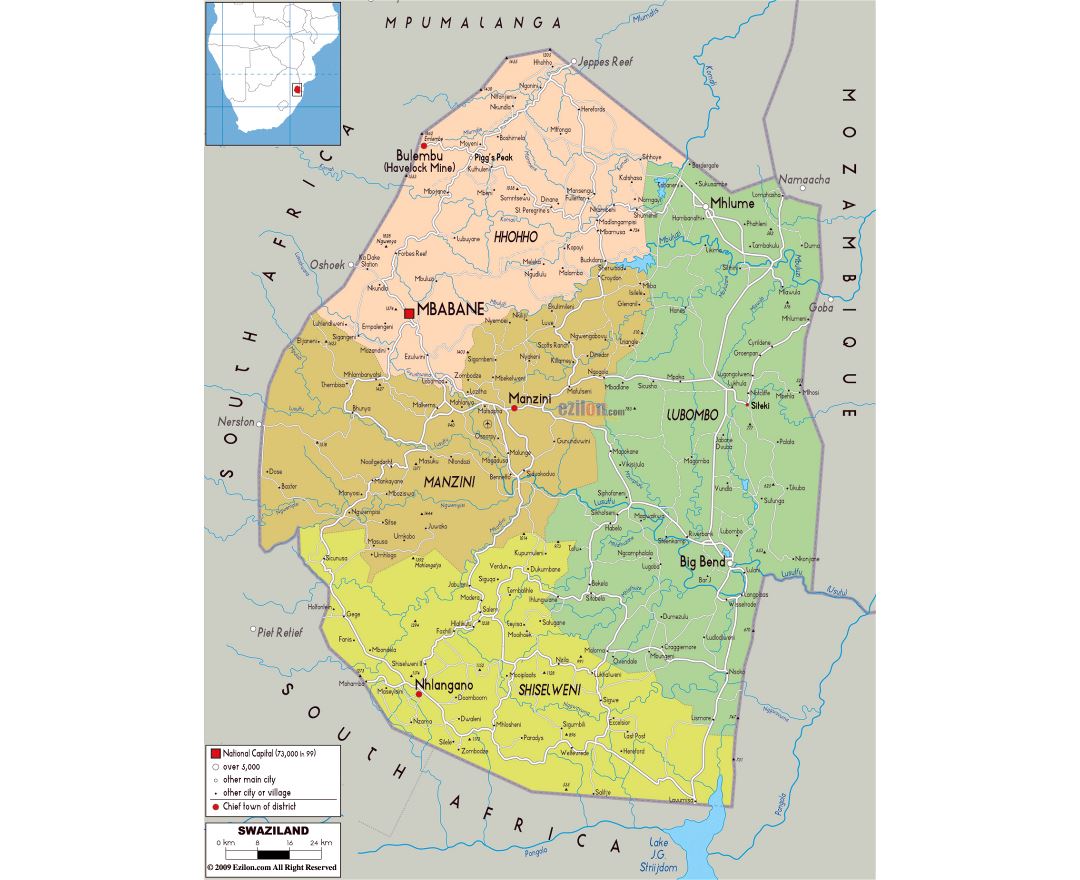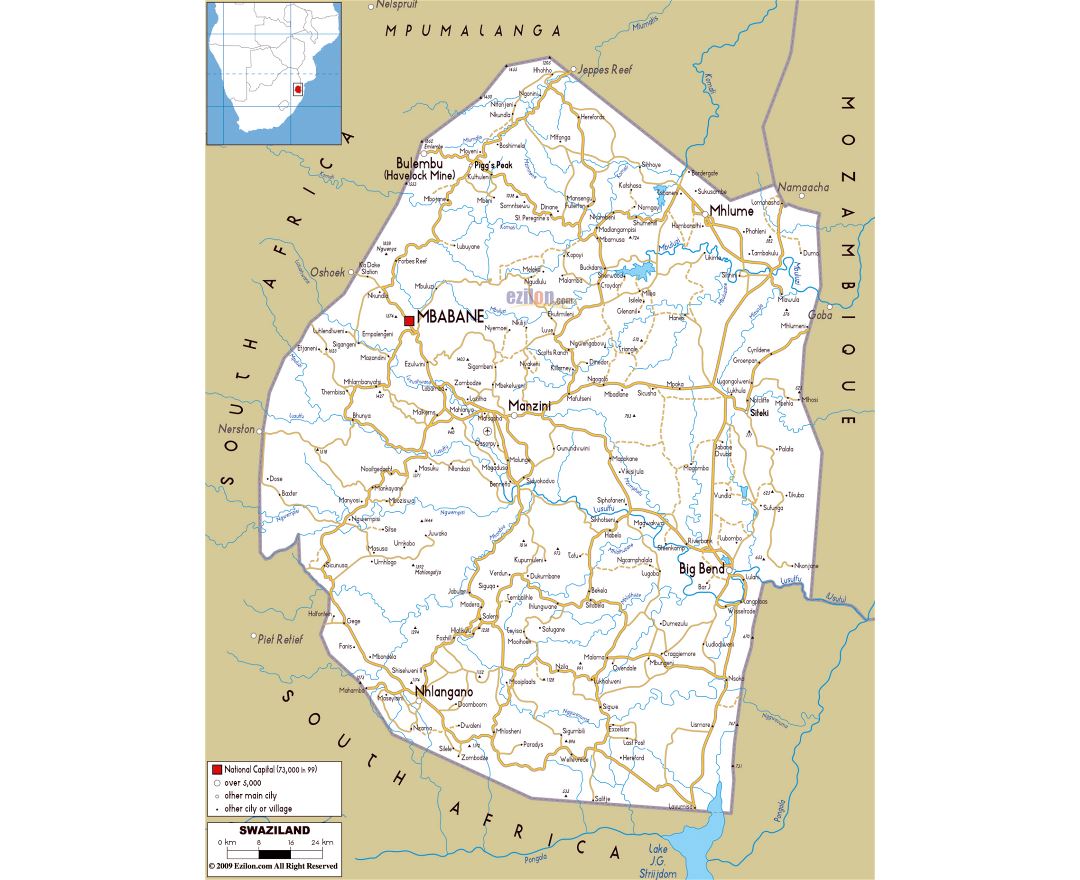Swaziland
Swaziland, officially the Kingdom of Swaziland, is a sovereign state in Southern Africa. It is neighboured by Mozambique to its northeast and by South Africa to its north, west and south. The country and its people take their names from Mswati II, the 19th-century king under whose rule Swazi territory was expanded and unified.
At no more than 200 kilometres (120 mi) north to south and 130 kilometres (81 mi) east to west, Swaziland is one of the smallest countries in Africa. Despite its size, however, its climate and topography are diverse, ranging from a cool and mountainous highveld to a hot and dry lowveld. The population is primarily ethnic Swazis whose language is Swati. They established their kingdom in the mid-18th century under the leadership of Ngwane III, the present boundaries were drawn up in 1881. After the Anglo-Boer War, Swaziland was a British protectorate from 1903 until 1967. It regained its independence on 6 September 1968.
The country is an absolute monarchy, currently ruled by Ngwenyama ("King") Mswati III. He is head of state and appoints the country's prime ministers and a number of representatives of both chambers (Senate and House of Assembly) in the country's parliament. Elections are held every five years to determine the House of Assembly majority. The current constitution was adopted in 2005.
Swaziland is a developing country with a small economy. Its GDP per capita of $9,714 means it is classified as a country with a lower-middle income. As a member of the Southern African Customs Union (SACU) and Common Market for Eastern and Southern Africa (COMESA), its main local trading partner is South Africa. Swaziland's currency, the lilangeni, is pegged to the South African rand. Swaziland's major overseas trading partners are the United States[10] and the European Union. The majority of the country's employment is provided by its agricultural and manufacturing sectors. Swaziland is a member of the Southern African Development Community (SADC), the African Union, the Commonwealth of Nations and the United Nations.
The Swazi population faces major health issues: HIV/AIDS and, to a lesser extent, tuberculosis are serious challenges. As of 2013, Swaziland has an estimated life expectancy of 50 years. The population of Swaziland is fairly young with a median age of 20.5 years and people aged 14 years or younger constituting 37.4% of the country's total population. The present population growth rate is 1.195%.
Swaziland is well known for its culture. Umhlanga, held in August/September and incwala, the kingship dance held in December/January, are the nation's most important events.

